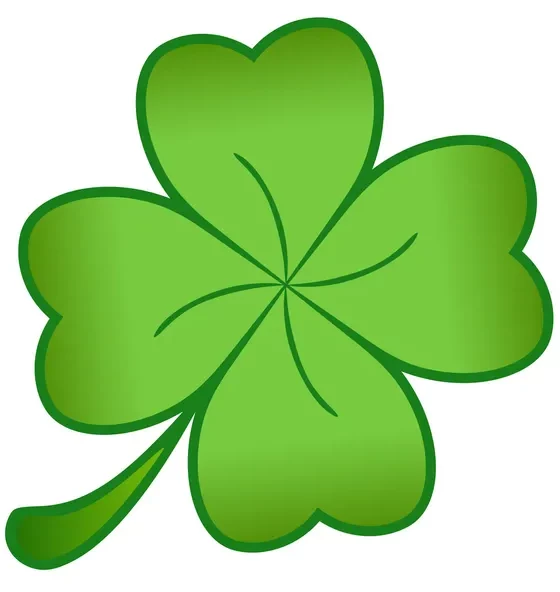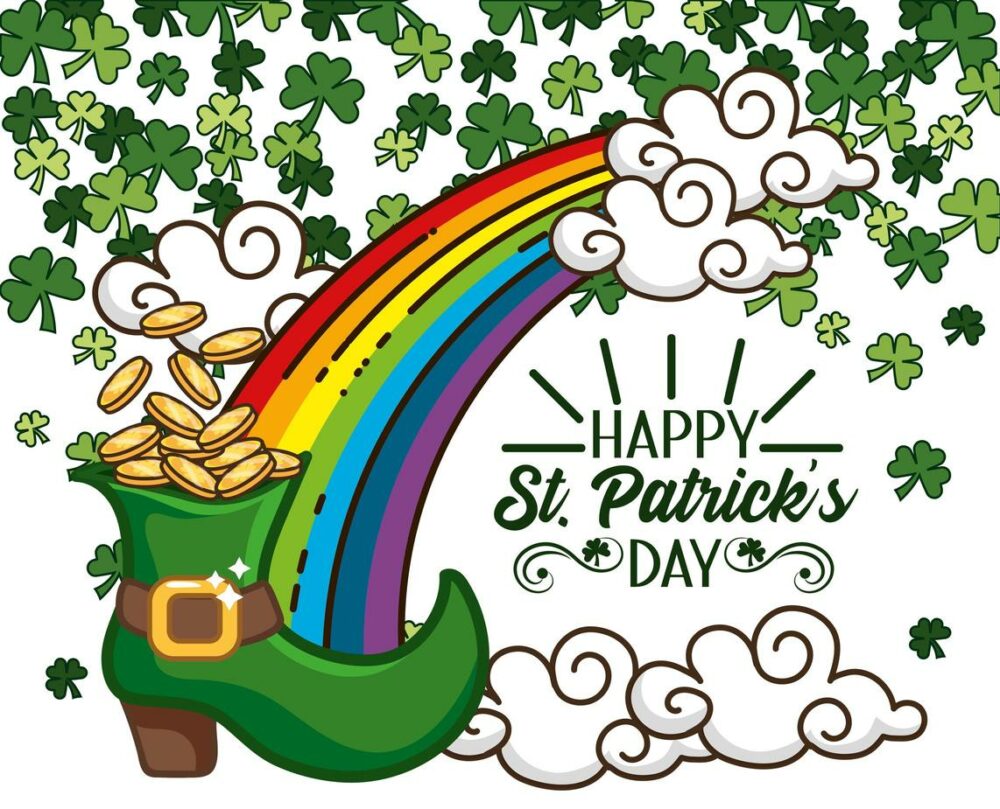Table of Contents
History of St Patrick’s Day: Where its Celebrated
The History of St Patrick’s Day is a holiday about celebrating the country of Ireland, the founding Ireland away from pagan and barbaric tribes, and the celebration of Celtic Heritage. Irish Immigration has had an impact on the United States and the USA has been celebrating Patrick’s Day for a good many years – also 8 of the signers of the Declaration of Independence were of Irish descent.
History of St Patrick’s Day: An Overview
March 17 is a special day. Many people wear green that day. Classrooms and businesses are decorated in green. School cafeterias serve green Jell-O. Bakeries sell green cupcakes. In Chicago, Illinois, green dye is put into the Chicago River to turn the water green for a day. March 17 is Saint Patrick’s Day. It is an Irish holiday and a day for everyone to wear the color green.
Ireland is a country in Europe. It has miles of green fields and valleys. Ireland even has a special name. It is known as the Emerald Isle. Emeralds are beautiful bright green jewels.
The Irish celebrate St. Patrick’s Day every year. St. Patrick is Ireland’s patron saint. A patron saint watches over people and places and keeps them safe. The Irish people believe not only that St. Patrick protects them, but also that he brought the Christian religion to Ireland.
St. Patrick’s Day is celebrated outside of Ireland, too. There are St. Patrick’s Day celebrations wherever Irish people live, including in the United States.
In many ways, St. Patrick’s Day has become an American holiday. It is not celebrated throughout the country. It is not an official government holiday like President’s Day. Schools, baks, and businesses are all open on ST. Patrick’s Day. The mail is delivered, too. But everyone is welcome to celebrate St. Patrick’s Day. Even people who are not Irish can enjoy the day. March 17 is a day for parades, parties, and having fun. So on St. Patrick’s Day, put on something green and join the fun!


History of St Patrick’s Day: Roman Beginnings
St. Patrick’s Day is an Irish holiday, but St. Patrick was not Irish. His name was not even Patrick.
St. Patrick was born somewhere in the British Isles, the area that includes England, Scotland, and Wales. Yet St. Patrick was not British, either. He was probably born in the year 385. At that time, people from Rome, Italy, ruled the land. So Patrick grew up as a Roman.
Not much is known about Patrick’s childhood. But we think that his name was Maewyn Succat. Patrick’s father was an important worker in the Roman government. Their family had a lot of money and lived in a large house by the sea. Servants waited on them.
As a boy, Patrick did not seem very saintly. He did not pray all the time. He did not always listen to the priests. However, that all changed when trouble started in Ireland, which was called Hibernia then. Fierce fighting tribes lived in Hibernia, across the sea from the British Isles. The men of these tribes often raided other lands. They stole things, took people bondage, and returned to Hibernia, where the people were sold as slaves.
History of St Patrick’s Day: Patrick is enslaved
When he was just sixteen, Patrick was kidnapped by raiders from Hibernia. Some of his family’s servants were taken, too. A powerful chief named MIliuc bought Patrick to Hibernia to be his slave.
Miliuc owned many sheep. Patrick became a shepherd. He watched over his master’s sheep and lived outside with the animals. He made sure that the animals did not run away.
It was a hard life. There were many cold and rainy nights. Patrick felt very lonely and sad. He wondered why he had been captured. He thought that God might be punishing him. He wished that he had listened to the priests.
Patrick was a shepherd for six years. During that time, he became very religious. He prayed often and he began to have visions. He believed God was appearing before him and speaking to him.
One night, Patrick heard a special voice that brought some welcome news. The voice told Patrick he would go home soon. It told him that a ship was ready to take him home.
Patrick was far away from the sea. It was dangerous for him to try to go there. A slave who ran away could be killed. But Patrick believed that God wanted him to go.
Patrick traveled over two hundred miles. Finally, he reached the sea where he found a ship waiting for him.
Patrick wanted to get on the ship. But, at first, the ship’s captain would not help him. He saw that Patrick was a runaway slave. Helping a runaway slave was dangerous. If the captain got caught, he could be punished.
Patrick left, but he did not know what to do next. So, he began to pray.
Perhaps Patrick’s prayers were heard. Suddenly people on the ship called out to him. They told Patrick to come back. The captain had changed his mind.
Patrick wanted to go home. But that did not happen. There were storms at sea, and the ship crashed.
The men ended up in a place that seemed to be deserted. There was no food in sight. It looked like they might die from hunger. Nearly a month passed, and the men grew very weak.
Patrick asked God to save them. He also prayed for food. Before long, the men spotted a herd of wild pigs. No one knew where the pigs came from. Bu the captain thought that Patrick’s prayers had been answered.
The men caught some of the pigs. They would now have food-and with food, they would not starve.
No one really knows what happened after that. Patrick later wrote that he became a slave again. No one knows for sure who captured him. Some people say a group of fighting men found the ship’s crew and all the men except Patrick were sold as slaves. The story says that the group of fighting men kept Patrick with them.
But there is another story about the ship’s captain. The captain believed in Patrick. He had seen him pray for food. The captain never wanted to be hungry again. So he forced Patrick to stay close.
We do not know which story is true. But Patrick was not a slave for very long. Once again, he heard a voice. This time, the voice said that Patrick would be free in two months. And he was!

History of St Patrick’s Day: A Special Calling
Patrick was finally free and he knew what he wanted to do. When he was a slave, he had not been allowed to go to school. Now he wanted to study religion. Patrick went to France and learned all he could. He became a priest.
In the year 432, Patrick was made a bishop. This is an important position in the Catholic Church. The pope is the head of the Catholic Church. He gave the new bishop the name Patricius, Latin for Patrick.
Patrick also returned to his homeland. He had been gone for many years. His family was very happy to see him. But he did not stay home for long. Patrick believed that God wanted him to go back to Ireland.
Patrick wanted the Irish to love God. He hoped that they would become Christians. Patrick gathered together a group of priests. They set sail for Ireland. It would be the most important trip of Patrick’s life.
People in Ireland had many different beliefs. They prayed to many gods. Magic was part of their religion, too.
Many different chiefs also ruled over Ireland. Each chief had his own religious advisers they were known as Druids.
The Druids prayed to different gods of nature. They held secret ceremonies in oak forests. Druids were thought to have strong magical powers. People believed that the Druids could see the future.
The Druids made life very difficult for Patrick. They thought he was their enemy. The Druids said that Patrick was evil. They even tried to kill him.

History of St Patrick’s Day: Patrick Stays in Ireland
But Patrick would not leave Ireland. He wanted people to become Christians and love God. He built churches and started Christian schools. He also traveled throughout the country. Patrick talked to the people. He spoke of their chiefs, too. He told them about his religion and shared his love for God. Patrick refused to give up. He remained in Ireland for over thirty years. In time, some of the chiefs began to believe in Patrick and his faith. The chiefs and their followers became Christians. They felt his kindness and they began to believe his words.
Patrick did what he had hoped to do. He helped thousands of Irish people find God. He helped turn Ireland into a Christian land.
Patrick died on March 17 in the year 461. After his death, the Church made him a saint. A saint is someone who is officially recognized by the Church for holiness.
We celebrate St. Patrick’s Day on the day of Patrick’s death. In Ireland, it is a religious holiday. People honor St. Patrick by going to special church services. They also enjoy getting together with family and friends.
For More Information on the History of St Patrick’s Day, Follow this Link…
Saint Patrick’s Day – Wikipedia
To Return to the Main St Patrick Day Page, Follow this Link…
The Website Dedicated to St. Patrick Day (celebratestpatricksday.com)


